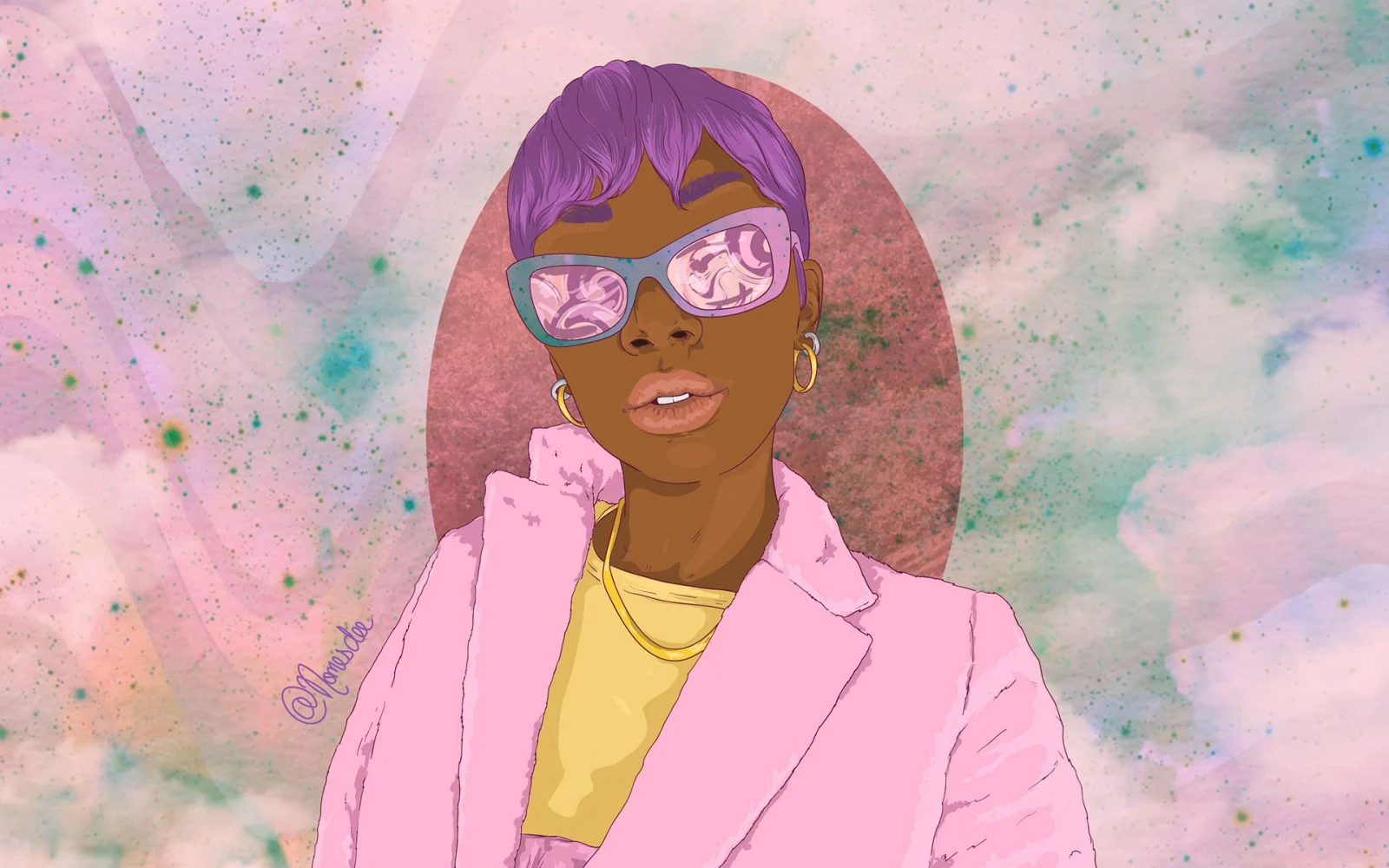

What do you get when you combine Zambian heritage, Japanese anime and global pop culture sensibilities? You get Nomes Dee (real name Naomi Doras), who lives and works in Lusaka, Zambia, one of the fastest developing cities in Africa. With a budding creative scene, life as a young artist there is good – challenging at times, but never boring.
Nomes’ works celebrate people from all kinds of backgrounds. The imagery on her Instagram feed, mostly displayed in triptych, features a fluorescent color palette and kaleidoscopic skies. Her subjects, often up-and-coming musicians, carry religious relics, or seem to have psychic vision. The artist effortlessly adds in iPhones, heart-shaped sunglasses and – perhaps today’s equivalent of Andy Warhol’s Campbell Soup cans – CupNoodles.

The postures and position of each subject also have a pop culture spin, bringing to mind selfie culture. “As we are largely sharing our lives and personas on social media,” Nomes says, “it is interesting in turn for me to show people how I see them.”
And this appears to be a position full of power. She associates her work with the afrofuturism movement, a cultural aesthetic rooted in the 1990s. It’s a critique of traditional art history, and its overly dominant focus on western narratives.

By devoting her work to multicolored protagonists, Nomes gives them a new place in the art canon. “To me, it’s the act of envisioning an alternate timeline, and a different way in which humanity progresses or could have developed. It’s a romantic idea, one I enjoy illustrating,” she explains.
Japanese anime is a great source of inspiration for the futuristic elements in her work. She has wide-ranging tastes, from Hayao Miyazaki’s internationally acclaimed animations, to more niche sci-fi series like The Tatami Galaxy and Paprika. “I’ve always been interested in the ability to create and immerse people in different worlds, so foreign to our own. I suppose in this way it is similar to afrofuturism; as a re-imagination of reality.”
By customizing a diverse range of cultures with the future, the past, and an unusual array of color, Nomes has created a world of her own – one that feels fresh, powerful, and full of characters we’re drawn to.



